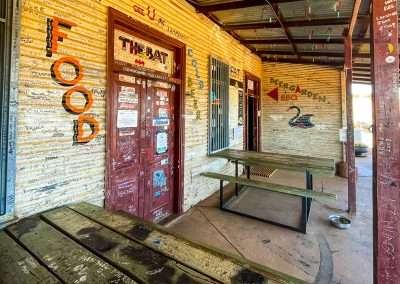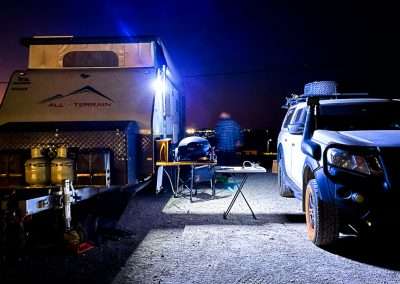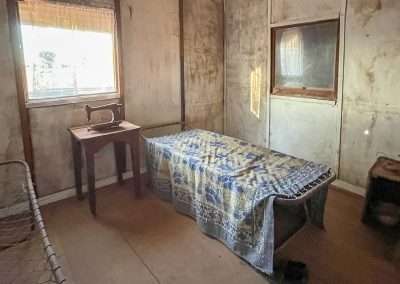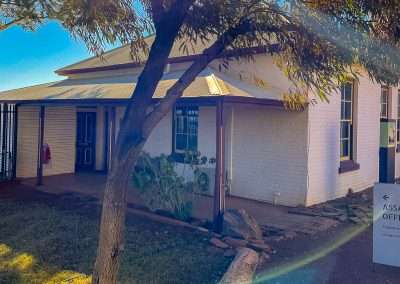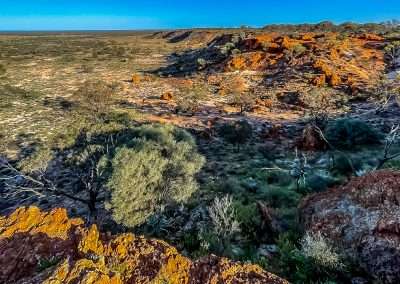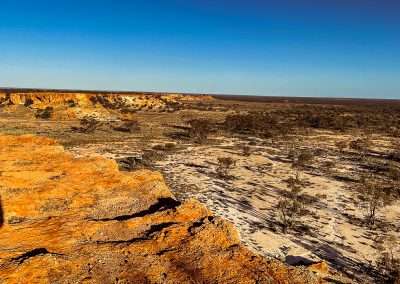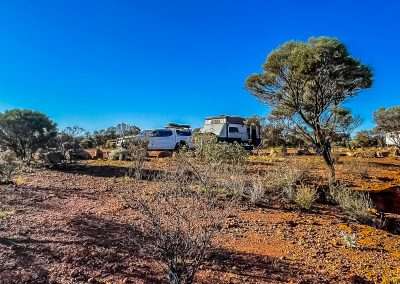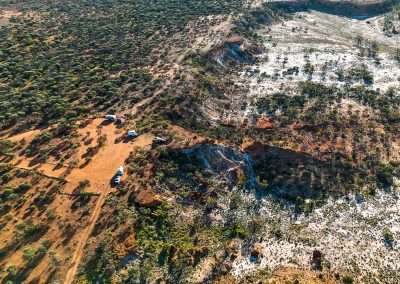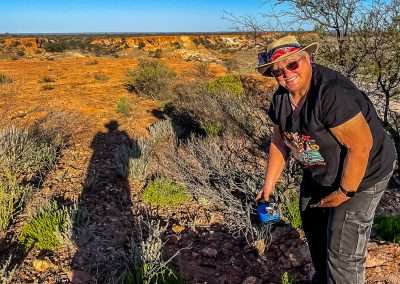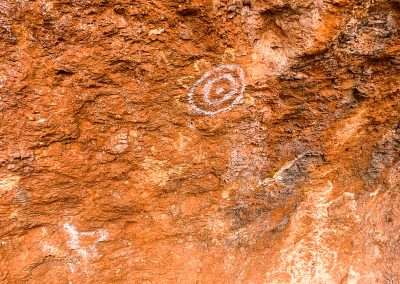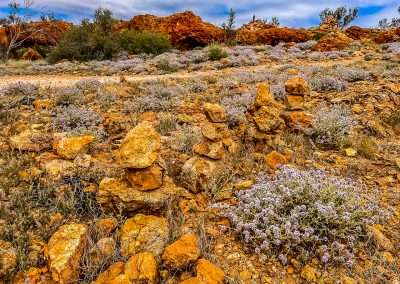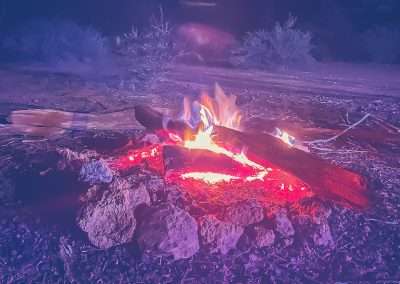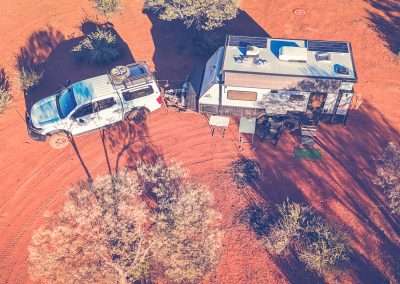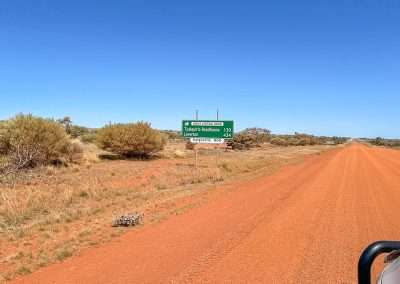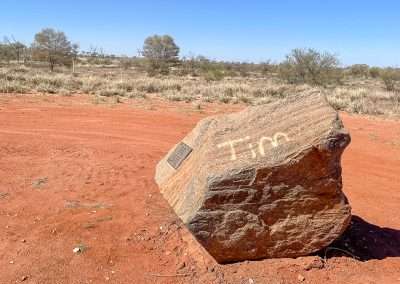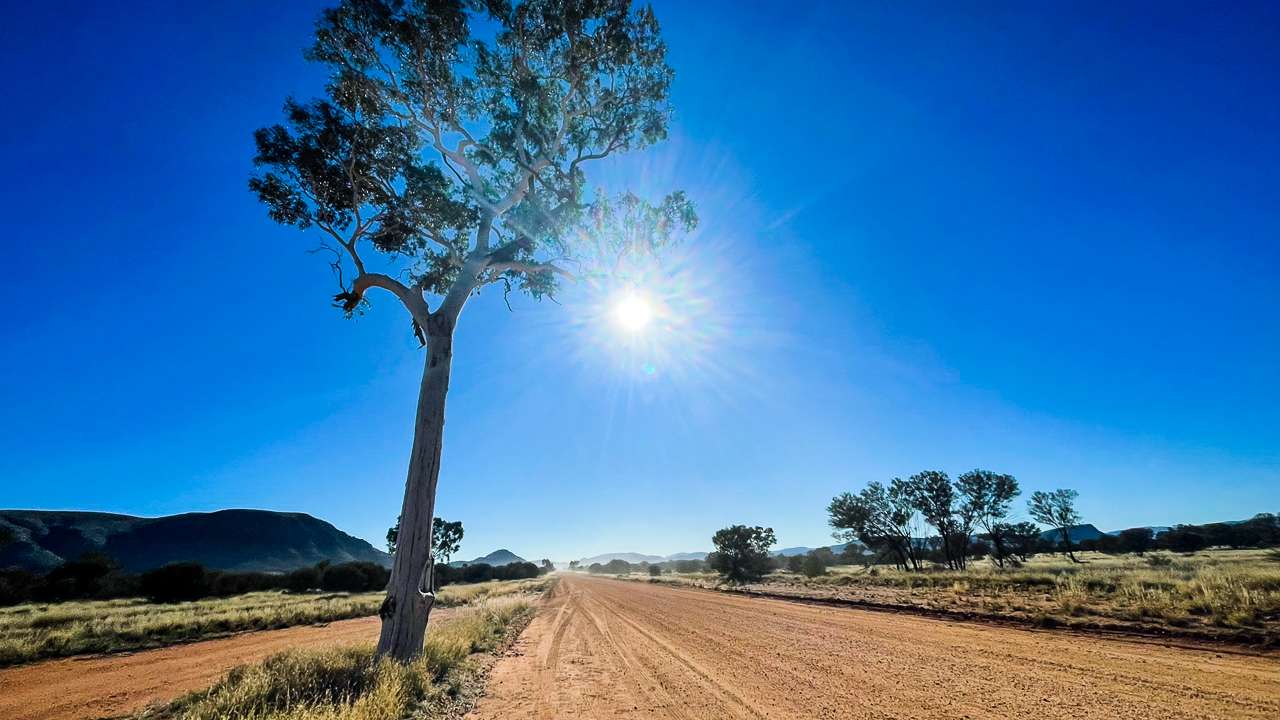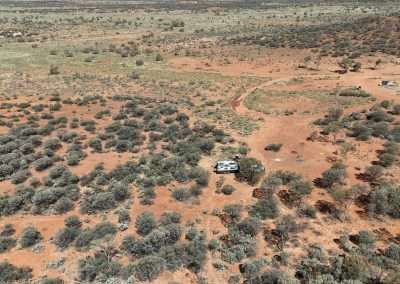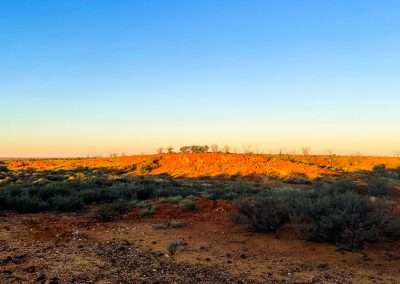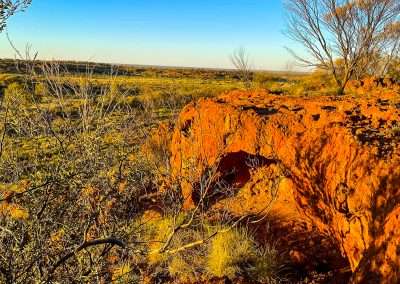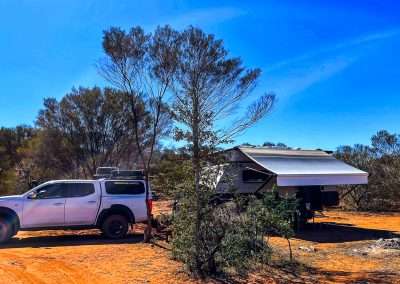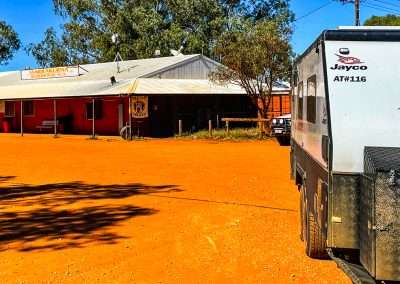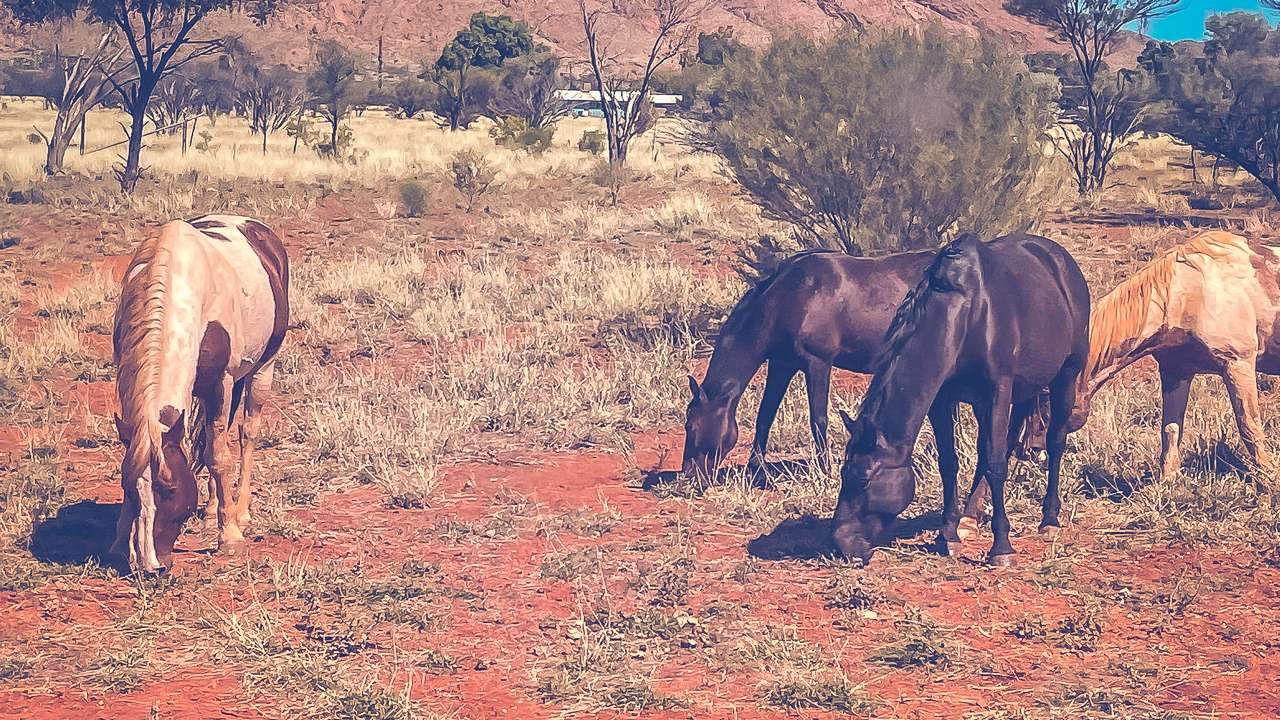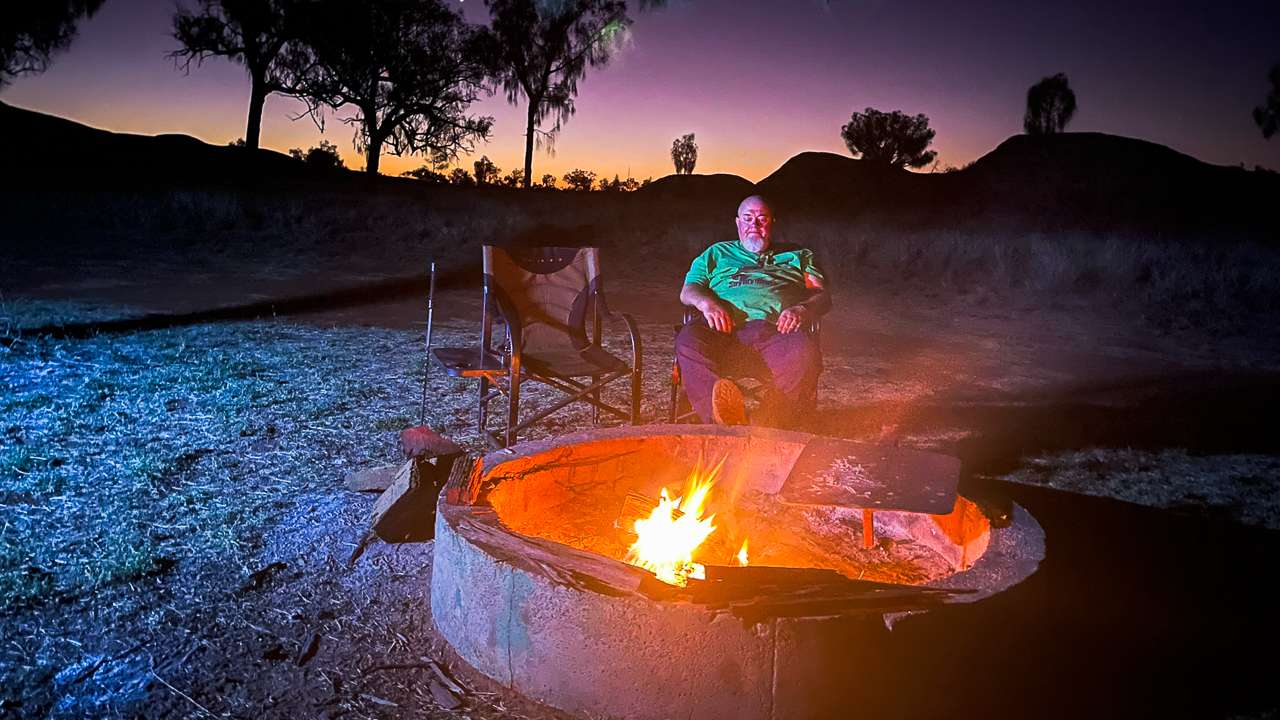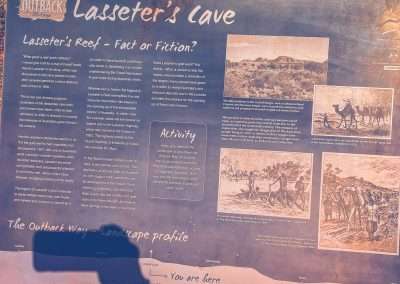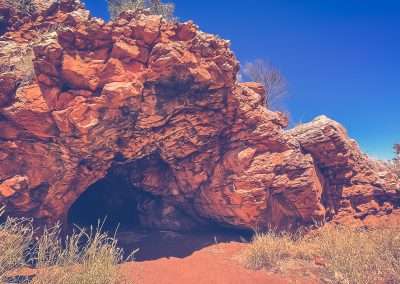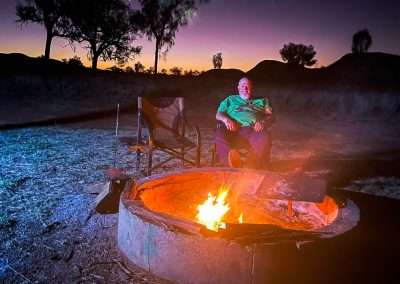
Visit Kalgoorlie With A Caravan: Where To Stay & What To Do
Visit Kalgoorlie With A Caravan: Where To Stay & What To Do
Visit Kalgoorlie with your caravan. Caravan parks, top attractions and things to do for a memorable outback WA goldfields adventure. After spending a few days camping at Discovery Parks – Boulder, we’re absolutely buzzing from our trip to Kalgoorlie-Boulder! This historic goldfields region of Western Australia is famous for its gold rush history and larger than life characters.
Whether you’re into history, adventure or just soaking up the unique vibe of a true blue Aussie town Kalgoorlie has something for everyone. In this post, I’ll take you through our experience exploring the area, From places to stay with a caravan to the best things to see and do. We’ll also try to cover a bit of the local history and offer some practical tips for making your stay as enjoyable as ours was.

Guided Bus Tour Of Kalgoorlie Boulder
Table Of Contents
- A Brief History of Kalgoorlie and Boulder
- Top 10 Things to Do in Kalgoorlie & Boulder
- Kalgoorlie Caravan Parks
- Is It Safe to Camp at Kalgoorlie?
- The Weather in Kalgoorlie
- Kalgoorlie Boulder Population History
- Superpit Kalgoorlie
- Final Thoughts on Our Stay at Discovery Parks – Boulder
- Kalgoorlie And Boulder WA Photo Gallery
- FAQs Frequently Asked Questions About Visiting Kalgoorlie
- What is Kalgoorlie famous for?
- Is Kalgoorlie safe to visit?
- What can I do in Kalgoorlie?
- What’s the weather like in Kalgoorlie?
- Can I stay in Kalgoorlie with a caravan?
- How do I get to Kalgoorlie?
A Brief History of Kalgoorlie and Boulder
Kalgoorlie and Boulder are two towns that merged into one city. Kalgoorlie-Boulder but they still hold onto their individual identities. The area was founded during the gold rush of the 1890s when prospectors flocked to Western Australia in search of their fortune. The discovery of gold at Hannan’s Find (now Kalgoorlie) in 1893 kicked off one of the biggest gold rushes in Australian history.
Boulder, just a short distance from Kalgoorlie developed around the Golden Mile. One of the richest gold deposits in the world. The area became famous for its mining, and even today Kalgoorlie’s Super Pit remains one of Australia’s largest and most productive gold mines.
The history of Kalgoorlie is one of resilience, hardship and determination,and you can feel it everywhere you go. From the grand old buildings lining Hannan Street to the working mines still shaping the landscape. This place tells a story of people tough enough to thrive in the outback while chasing the promise of gold.
Top 10 Things to Do in Kalgoorlie & Boulder
We were spoilt for choice with things to do in Kalgoorlie-Boulder. Here’s a list of our top 10 must dos.
- Tour the Superpit Kalgoorlie
The Superpit is a sight to behold. One of the world’s largest open-cut gold mines. You can go on a guided tour to learn about its history and how gold is mined there today. The scale of the pit is mindblowing. Watching the massive trucks haul ore out of the pit is something you won’t forget. Come back late in the day most weekdays and you can sometimes see a blast. - Explore Hannan Street
Kalgoorlie’s main street is a blast from the past with historic buildings that take you back to the gold rush era. You can visit Hannan’s Club where the town’s wealthy miners once gathered, or grab a drink at one of the iconic pubs like the Exchange Hotel or The Palace Hotel. - Museum of the Goldfields
If you’re a history buff like us, you’ll love the Museum of the Goldfields. It’s packed with artefacts from the gold rush era, including old mining tools, photos, and even gold nuggets. The museum gives a real feel for what life was like in Kalgoorlie during the early days. - Visit Mount Charlotte Reservoir and Lookout
This is a great spot to take in views of Kalgoorlie-Boulder and learn about the Golden Pipeline, which was an engineering marvel that brought water to the region from Perth, over 500 km away. The lookout offers beautiful panoramic views, especially around sunset. - Karlkurla Bushland Park
If you fancy a bit of nature, Karlkurla Bushland Park is a lovely place for a bushwalk. The park has several walking tracks and is home to native wildlife including kangaroos and heaps of birdlife. It’s a peaceful retreat just outside town, and we loved the fresh air and tranquillity after exploring the bustling city. - Go on a Gold Prospecting Tour
Ever fancied finding your own piece of gold? You can join a gold prospecting tour, where you’ll be given a metal detector and some training. It’s a fun and unique experience, even if you don’t strike it rich (but you might just find a nugget or two!). - Explore Boulder’s Historical Precinct
Boulder has its own charm and is a bit quieter than Kalgoorlie. Boulder’s Town Hall is famous for its beautifully preserved Goatcher Curtain, a hand-painted theatre curtain from the early 1900s. Wander around and take in the historical buildings, many of which are original from the gold rush days. - The Goldfields Arts Centre
For those interested in arts and culture the Goldfields Arts Centre is a hub for local exhibitions and performances. They often have shows, live music, and art displays that give you a taste of the creative side of Kalgoorlie. - Hammond Park
This local park is perfect if you’re travelling with kids (or if you just want to relax for a bit). There’s a mini-zoo with emus, kangaroos, and peacocks, and the lush gardens make it a lovely spot for a picnic. - Kalgoorlie-Boulder Racing Club
If you’re in town during race season, the Racing Club is a must-visit. The Kalgoorlie Cup is a major event in the racing calendar, and even if you’re not a big fan of horse racing, the atmosphere is electric, with everyone dressed up and having a good time.

Looking Down Into The Super Pit
Kalgoorlie Caravan Parks
When it comes to camping with a caravan in Kalgoorlie-Boulder there are plenty of Kalgoorlie caravan parks to choose from. We stayed at Discovery Parks – Boulder, which we found to be a great base for exploring the area. Here are some caravan parks you can stay at.
Discovery Parks – Boulder
Located in Boulder this park is well-equipped for caravans, with powered sites, clean amenities. Even a swimming pool to cool off in after a day of exploring. The park has free Wi-Fi, a camp kitchen, BBQ facilities, and laundry services. It’s also pet-friendly. This is a great Kalgoorlie Caravan Park.
Price: Powered sites start from around $45 per night.
Contact: (08) 9093 7550
Address: 201 Lane St, Boulder WA 6432
Goldminer Caravan Park
Another popular Kalgoorlie caravan park is the Goldminer Caravan Park, which is also in Boulder. It’s known for being quiet and clean, with well-maintained facilities. You’ll find powered sites, a camp kitchen, and BBQ areas.
Prospector Holiday Park
Located in Kalgoorlie, Prospector Holiday Park offers powered and unpowered caravan sites, as well as cabins. It’s close to town, so you’re never far from the action, but it’s quiet enough for a relaxing stay. It’s another great Kalgoorlie caravan park.
Is It Safe to Camp at Kalgoorlie?
Absolutely! We found Kalgoorlie-Boulder to be a safe place to camp, and the caravan parks are well-maintained and secure. Like any town, it’s good to keep an eye on your belongings, but overall, we felt comfortable and at ease during our stay.
That said, if you’re camping in more remote areas outside town, it’s always a good idea to take the usual precautions—lock your van, store your food properly to avoid attracting wildlife, and be mindful of the weather.
The Weather in Kalgoorlie
The weather in Kalgoorlie-Boulder is typical of the Goldfields region—hot in summer and cool in winter. Summer temperatures can reach the high 30s or even 40°C, so be prepared if you’re visiting during those months. Sunscreen, a hat, and plenty of water are essentials. Winter is much more comfortable, with daytime temps ranging from 16°C to 20°C, but the nights can get chilly, sometimes dropping below freezing. We visited in autumn, which was perfect—warm during the day and cool enough at night for a campfire.

York Hotel Kalgoorlie
Kalgoorlie Boulder Population History
Located in Western Australia’s Goldfields region, has a rich history tied closely to the gold mining industry, which has influenced its population patterns over the years. Here’s a brief look at the population history of Kalgoorlie-Boulder.
Early Settlement and Gold Rush Boom
Kalgoorlie-Boulder’s population growth began in the 1890s when gold was discovered in the area. In 1893, gold prospector Paddy Hannan made a significant find, triggering the Kalgoorlie Gold Rush. Thousands of people from all over Australia, and even from abroad, flocked to the region in search of fortune. By the late 1890s, Kalgoorlie and Boulder (which were separate towns at the time) had rapidly grown, with populations surging due to the influx of miners, traders, and their families.
- 1897: Kalgoorlie had a population of around 2,018, while Boulder had about 1,154 people.
- 1903: As the gold boom continued, the combined population of Kalgoorlie and Boulder exceeded 30,000, making it one of the largest regional centres in Western Australia at the time.
Population in the 20th Century
During the early 20th century, Kalgoorlie and Boulder maintained a steady population as mining continued to support the local economy. The towns were officially merged in 1989 to form the City of Kalgoorlie-Boulder. However, technological advancements in mining and periodic fluctuations in the gold price caused some changes in population levels.
- 1930s-1940s: During the Great Depression and World War II, population growth slowed as mining activity dipped.
- 1950s-1960s: Post-war, the town saw renewed growth with mining innovations like the use of open-cut mining techniques.
Late 20th Century to Present
In more recent times, the population of Kalgoorlie-Boulder has seen some fluctuation but has remained relatively stable. The mining industry remains a key part of the local economy, and improvements in infrastructure have helped maintain the town’s population. Kalgoorlie-Boulder has also become a service hub for the surrounding region, contributing to steady population numbers.
- 1980s-1990s: Kalgoorlie-Boulder’s population hovered around 30,000 to 35,000, influenced by the mining booms and busts.
- 2001 Census: The population was approximately 28,250 people.
- 2021 Census: The population stood at around 27,000, indicating a slight decline over two decades, but the city still remains a key regional centre in WA.
Current Population
As of the most recent data, Kalgoorlie-Boulder’s population is approximately 27,000 people. While the population has experienced some fluctuations over the years, it remains a vibrant community driven by mining, tourism, and its rich cultural history.
Kalgoorlie Boulder Population Concusion
The population of Kalgoorlie-Boulder has been closely tied to the ebb and flow of fortunes in the mining industry. Significant growth during the gold rush era and subsequent steady changes as the economy evolved. Kalgoorlie Boulder continues to be an important regional centre with a stable population thanks to its ongoing economic opportunities.

View From Water Tower Looking Over Kalgoorlie Towards Boulder
Superpit Kalgoorlie
The Superpit, also known as the Kalgoorlie Superpit, is one of Australia’s most iconic and largest open-cut gold mines, located just outside the town of Kalgoorlie-Boulder in Western Australia. It’s a sight to behold and a key player in the area’s economy and history, stretching over 3.5 kilometres in length, 1.5 kilometres wide, and 600 metres deep.
A Brief History of the Superpit Kalgoorlie
The history of the Superpit Kalgoorlie is closely tied to the gold rush era that shaped Kalgoorlie-Boulder. Gold was discovered here by Paddy Hannan in 1893, and his discovery led to a massive influx of miners and prospectors hoping to strike it rich. Over the years, numerous individual underground mining operations sprouted up on the “Golden Mile,” a rich seam of gold deposits near Kalgoorlie.
By the late 1980s, many of the smaller mines were consolidated into one large-scale operation under the ownership of mining magnate Alan Bond. This resulted in the creation of the Superpit Kalgoorlie in 1989, which allowed for a more efficient method of extracting gold using open-pit mining techniques. Though Alan Bond’s business ultimately faltered, the Superpit Kalgoorlie continued under the management of Kalgoorlie Consolidated Gold Mines (KCGM), a joint venture between Newmont Corporation and Barrick Gold.
The Superpit remains one of the largest open pit mines in the world, producing hundreds of thousands of ounces of gold annually.
Visiting the Superpit Kalgoorlie
If you’re in Kalgoorlie-Boulder, visiting the Superpit Kalgoorlie is an absolute must. There’s an observation deck where visitors can get a panoramic view of this massive mining operation, and you can see the giant trucks and machinery working far below. It’s an impressive sight that highlights the scale of modern mining and the area’s rich mining heritage.
- Location: Just outside Kalgoorlie-Boulder
- Viewing Deck: Open daily with a lookout that provides great views of the pit
- Tours: Guided tours of the Superpit are also available, providing insight into the mining processes and history of the area.
Mining Operations
The Superpit operates 24/7, with giant haul trucks and enormous excavators constantly at work to extract ore. The gold extracted from the mine is processed on-site, and over its lifetime, the Superpit has produced more than 50 million ounces of gold. Although the pit was originally expected to close around 2021, ongoing discoveries have extended its life for several more years, ensuring it remains an economic powerhouse for the region.
The Future of the Superpit
While the Superpit’s lifespan has been extended beyond initial expectations, it is inevitable that the pit will one day cease operations as the gold reserves are depleted. However, plans are already in place for the eventual rehabilitation of the site. The mine has been a crucial part of Kalgoorlie-Boulder’s identity, but the town has diversified its economy and developed its tourism sector, ensuring it will continue to thrive even after the mine eventually closes.
Superpit Kalgoorlie Conclusion
The Superpit is not just a massive hole in the ground; it’s a symbol of the determination and spirit that built Kalgoorlie-Boulder. For over a century gold mining has been the driving economic force behind this region. The Superpit represents the peak of that legacy. Whether you’re a history buff, a fan of engineering marvels, or just curious about one of Australia’s largest mining operations, the Superpit is a fascinating and impressive site to explore.

Digger Bucket At The Super Pit
Final Thoughts on Our Stay at Discovery Parks – Boulder
Camping at Discovery Parks – Boulder was an excellent way to experience the rich history and unique charm of Kalgoorlie-Boulder. The park had everything we needed for a comfortable stay, and we loved how close it was to all the major attractions. Whether you’re a history buff, a nature lover, or just someone looking to explore the outback, Kalgoorlie-Boulder offers an experience you won’t forget. From the towering Super Pit to the quiet charm of Boulder’s Town Hall, there’s so much to see and do. We’re already planning our next trip back. There’s just something about this place that leaves you wanting more!
Kalgoorlie And Boulder WA Photo Gallery
View From Water Tower Looking Over Kalgoorlie Towards Boulder
View From Water Tower Looking Over Kalgoorlie Towards Boulder
FAQs Frequently Asked Questions About Visiting Kalgoorlie
What is Kalgoorlie famous for?
Is Kalgoorlie safe to visit?
What can I do in Kalgoorlie?
What’s the weather like in Kalgoorlie?
Can I stay in Kalgoorlie with a caravan?
How do I get to Kalgoorlie?








